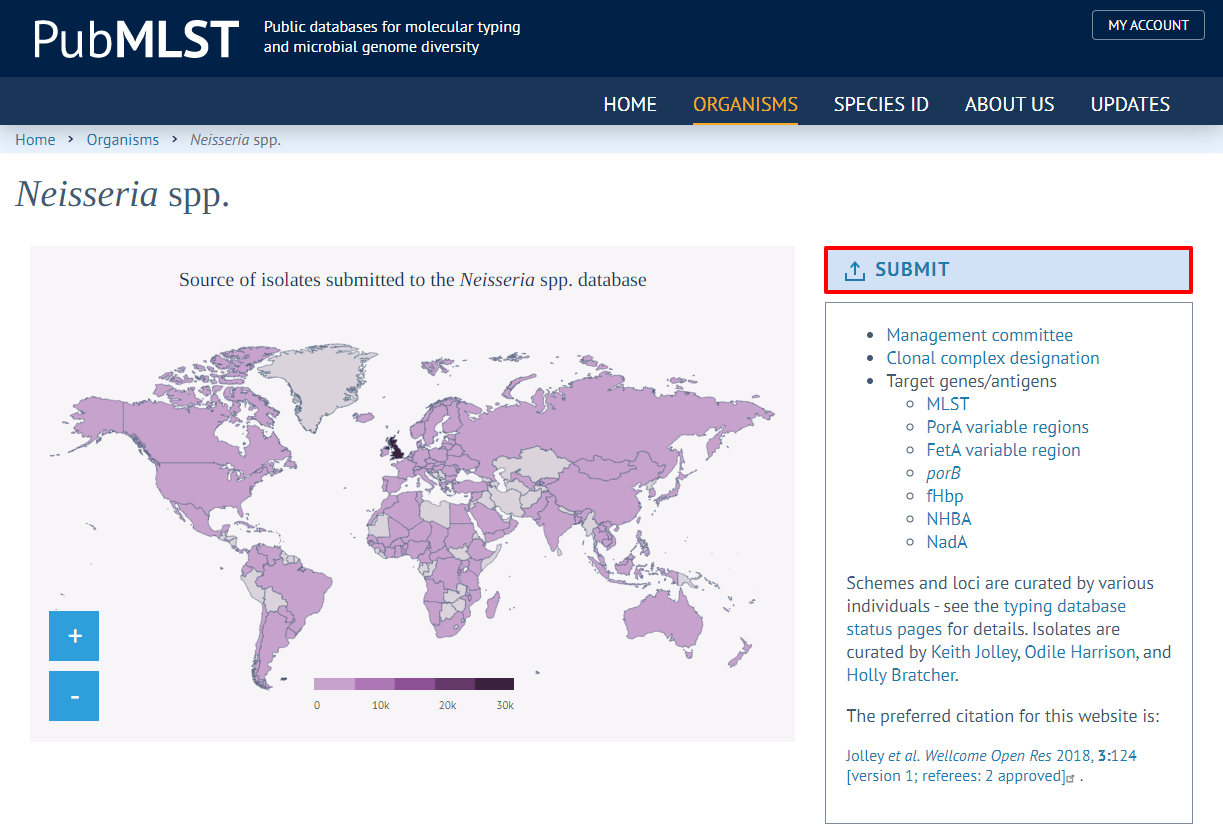We welcome submissions to the databases hosted on PubMLST. Each organism-specific set of databases is overseen by one or more curators from all over the world who are usually researchers working on that organism and who, therefore, have an understanding of the biology and environment of the organism. Instructions for how to submit to each database can be found linked from the front page for each organism.
How to submit
Some smaller databases currently just have an E-mail link to the curator where data can be sent directly. The larger or newer databases use an automated submission system that allows you to upload data via the website. Submissions are then routed automatically to a curator. To submit, please:
- Access the site for the organism that you are submitting for.
- Click the 'Submit' link on the organism page and follow the instructions.

How data are organised
Most organisms have two separate, but linked databases.
- A typing database which contains:
- Allele definitions that provide an identifier for each unique sequence defined for each locus.
- Profile definitions that provide a sequence type (ST) identifier for each unique combination of alleles for a typing scheme.
- An isolate database which contains:
- Isolate records that describe the provenance and phenotype of each isolate. These usually also contain allele designations, linked to the typing database, showing which alleles have been sequenced from the isolate.
- Genome assemblies associated with an isolate record. Not every isolate will have a genome assembly.
Data requirements
The curators for each organism may have specific requirements but in general please note:
- Allele sequences: If sequences have been determined by the Sanger (di-dedeoxy terminator) method, you will need to submit both forward and reverse trace files to the curator for assessment. Sequences determined by whole genome sequencing methods, e.g. Illumina, can be submitted without additional supporting information.
- MLST profiles/STs: Ideally every ST that is assigned will be associated with one or more isolate records. Submissions of new profiles therefore also require an isolate submission (except in the small number of organisms that currently only have a typing database).
- Isolate records: Each organism isolate database has a particular set of fields specific for it, although some fields are found in every database. Please use the templates that can be found from the 'Submit' link on each organism page.